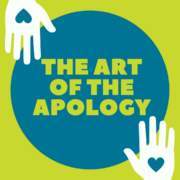Building a Strong Vocabulary: Elementary Level

Information gathered from the 20-volume Oxford English Dictionary estimates that there are likely three quarters of a million English words, and this is a conservative estimation. With seemingly limitless options to choose from when speaking, writing, or reading, vocabulary acquisition is a vital, albeit somewhat disregarded, aspect of academic development. Elementary curricula widely limit vocabulary instruction after a certain grade, making it even more important to build up a strong foundation at home. So, how exactly can we foster a rich vocabulary for children at a young age? Surprisingly, age is on their side when it comes to acquiring vocabulary skills.
A little-known fact about language is that it cannot only be heard before birth, but some studies indicate that infants even begin to equate meaning to words in the womb, as well. Even more impressive is the rapid rate by which school-aged children learn new words after age six—an average of 20 new words per day! This information proves that it is never too early to work on improving vocabulary.
Studies suggest that direct instruction of vocabulary does little to build an understanding. Word games, however, are a fun and easy way to practice building vocabulary at a young age. Scrabble, Boggle, crossword puzzles, etc., will provide children with skills to build a robust vocabulary. Even using an activity such as Mad Libs can help children practice vocabulary use in a “play-like” format. Utilizing word games is a great way to build motivation and comprehension without making it seem like instruction.
Incorporating synonyms is another valuable manner of building vocabulary. When your child is expressing emotions, prompt him or her to use other words beyond “mad,” “sad,” and “happy.” Expressions, animals, actions, colors—the categories are limitless for introducing synonyms. The point here is to provide as much exposure as possible. Even when speaking around your children, introduce new or unfamiliar words so that they can hear them being used in everyday speech. When doing this, be sure to provide adequate context so that the new terms are rooted in speech or language that they already know. Otherwise, the new terms will be literally lost in translation.
It is also important to note that it is not necessary to correct children’s speech on a regular basis. The interesting part of “kid-speak” is the subconscious thought process behind youngsters’ common grammatical errors. For instance, it may be adorable when we hear children say things like, “I goed to the store with Mom today.” No, “goed” is not grammatically correct, but it does exhibit the attempt to use the past tense verb of “to go.” Instead of blatantly correcting their error, subtly replace their “goed” with “went.” This slight shift in language use will demonstrate the correct grammatical usage without frustrating them with constant corrections. Once they have mastered the grammatical usage, synonym work becomes even more helpful. Did you “go” to the store with mom? Or did you mosey to, rush to, visit, meander through, peruse about, etc.
________________________________________________________________________




